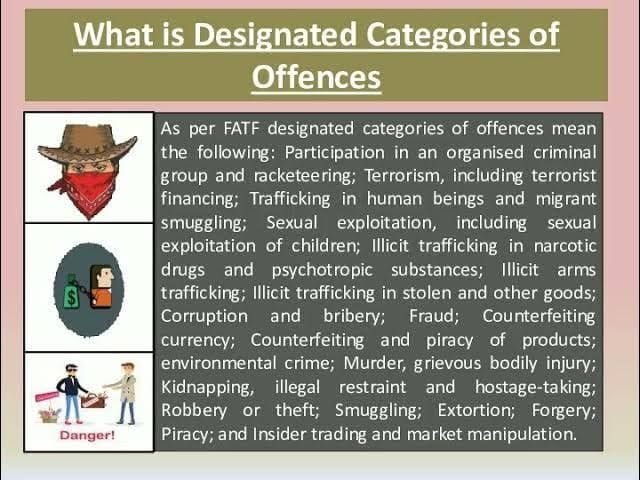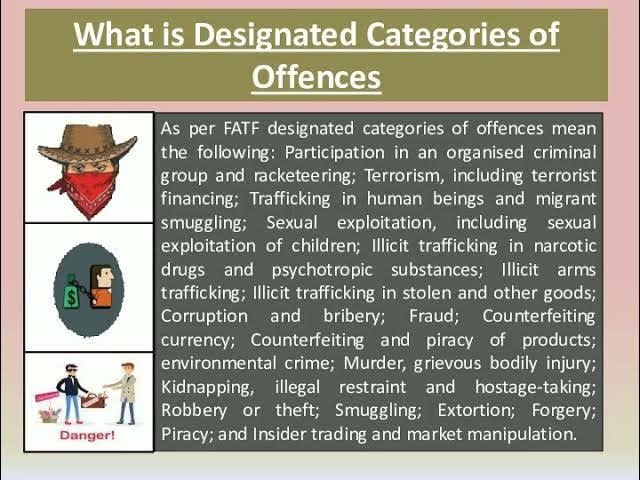#QuickBiteCompliance Day 82
💡 What Are “Designated Categories of Offense”? Let’s Break It Down! 💡
Did you know that bad guys (aka criminals) use money from their illegal activities to make it look “clean”? This is called money laundering. But where does that “dirty money” come from? That’s where Designated Categories of Offense come into play!
Think of it like this: Imagine someone steals cookies from a bakery, sells those cookies, and then uses that money to buy a shiny toy. The stolen cookies are the illegal part, and the toy is what they use to hide the crime. The stolen cookies are like the “predicate offense” – the crime that starts the money-laundering process.
The Financial Action Task Force (FATF), a global group fighting financial crime, says countries should pay attention to 21 types of crimes that can lead to money laundering. These include things like:
Drug trafficking – Selling illegal drugs and hiding the profits.
Fraud – Tricking people out of their money (e.g., fake lottery scams).
Human trafficking – Exploiting people for money.
Environmental crimes – Smuggling rare animals or illegal logging.
Unfortunately, in some places, the rules about these crimes aren’t very clear. Criminals love this because it’s easier to hide their bad actions. For example:
🚗 A car dealership gets money from illegal drug sales and pretends it came from car sales.
🌴 A logging company chops down trees in protected forests and sells the wood, hiding the profits as “legal” earnings.
When laws are vague or incomplete, it gives these bad guys a chance to hide in the shadows. That’s why it’s crucial for every country to clearly define these offenses and strengthen their defenses against financial crime!
👉 Let’s work together to stop the flow of dirty money!
#AntiMoneyLaundering #FinancialCrime #FATF #MoneyLaundering #Compliance #FraudPrevention #CrimeFighters #TransparencyMatters #InclusiveRegtech #OpenSourceAML
Source: https://www.acams.org/en/resources/aml-glossary-of-terms


